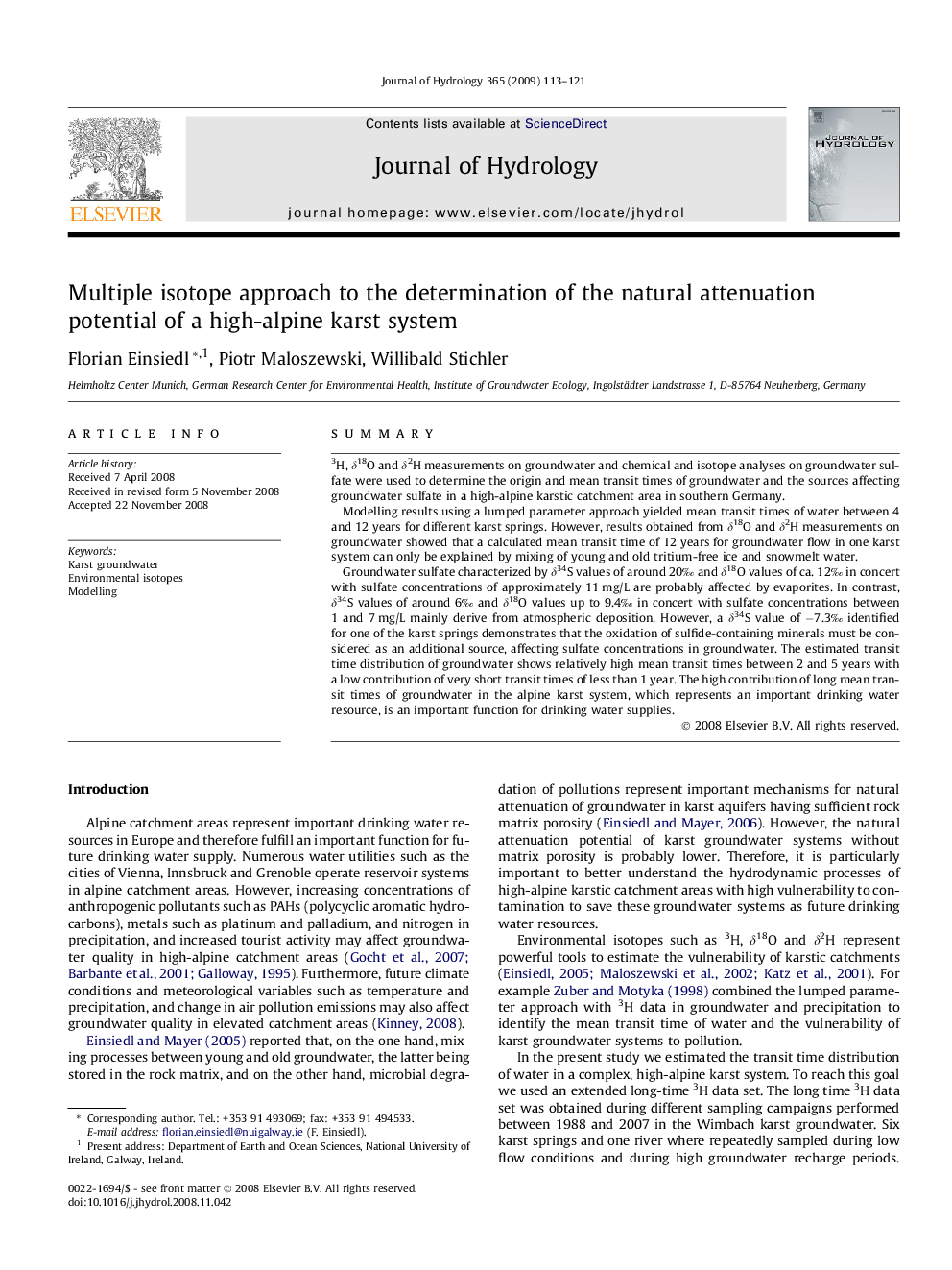| Article ID | Journal | Published Year | Pages | File Type |
|---|---|---|---|---|
| 4579103 | Journal of Hydrology | 2009 | 9 Pages |
Summary3H, δ18O and δ2H measurements on groundwater and chemical and isotope analyses on groundwater sulfate were used to determine the origin and mean transit times of groundwater and the sources affecting groundwater sulfate in a high-alpine karstic catchment area in southern Germany.Modelling results using a lumped parameter approach yielded mean transit times of water between 4 and 12 years for different karst springs. However, results obtained from δ18O and δ2H measurements on groundwater showed that a calculated mean transit time of 12 years for groundwater flow in one karst system can only be explained by mixing of young and old tritium-free ice and snowmelt water.Groundwater sulfate characterized by δ34S values of around 20‰ and δ18O values of ca. 12‰ in concert with sulfate concentrations of approximately 11 mg/L are probably affected by evaporites. In contrast, δ34S values of around 6‰ and δ18O values up to 9.4‰ in concert with sulfate concentrations between 1 and 7 mg/L mainly derive from atmospheric deposition. However, a δ34S value of −7.3‰ identified for one of the karst springs demonstrates that the oxidation of sulfide-containing minerals must be considered as an additional source, affecting sulfate concentrations in groundwater. The estimated transit time distribution of groundwater shows relatively high mean transit times between 2 and 5 years with a low contribution of very short transit times of less than 1 year. The high contribution of long mean transit times of groundwater in the alpine karst system, which represents an important drinking water resource, is an important function for drinking water supplies.
